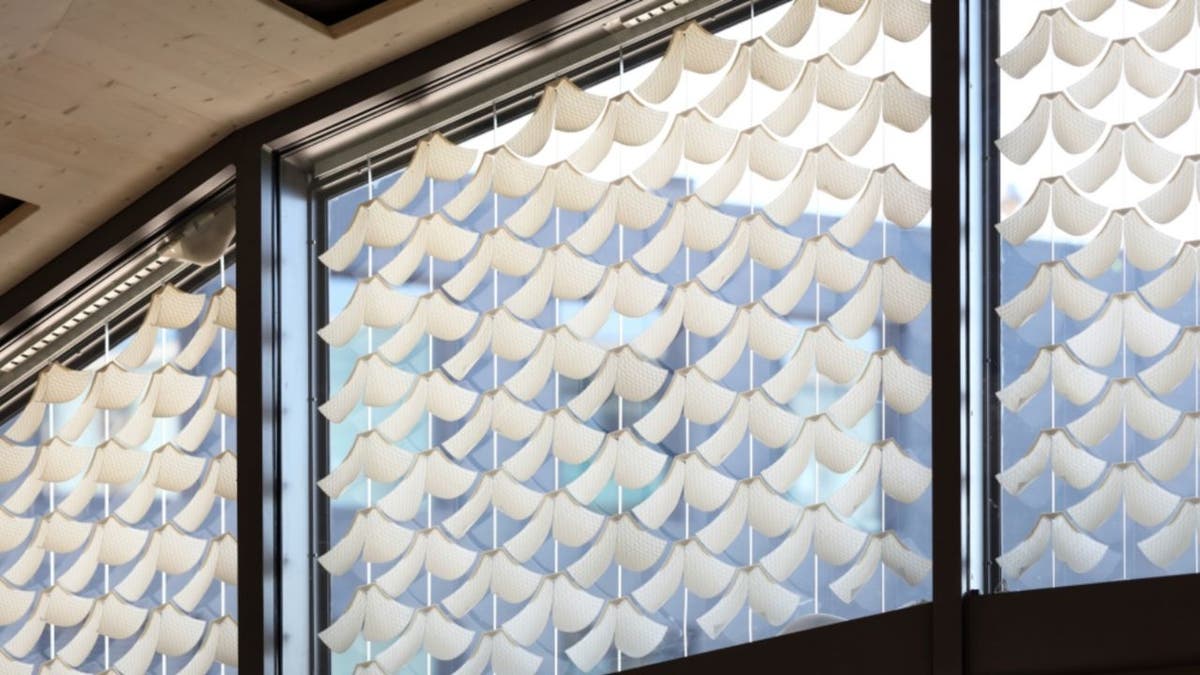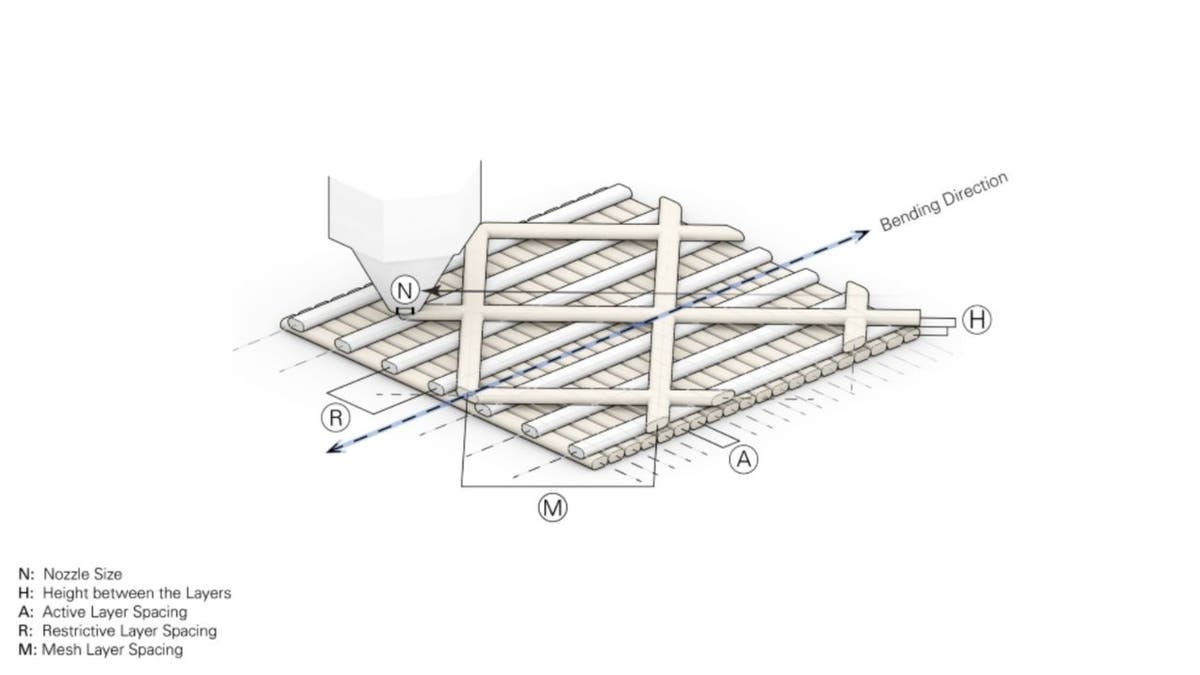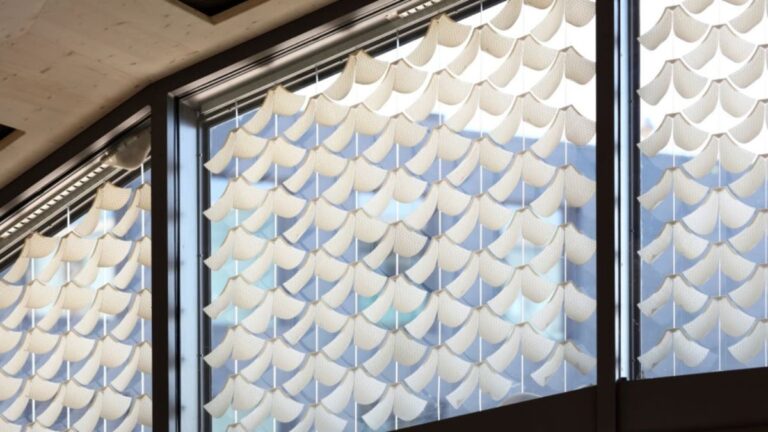Have you ever considered how a pine cone instinctively knows when to open or close? This phenomenon is rooted in science, not magic.
Researchers have drawn inspiration from this natural mechanism to develop a fascinating home technology.
Today, we’ll explore an innovative window system designed to enhance home comfort without consuming any electricity.
Nature as a Blueprint
Pine cones possess remarkable scales that react to their environment, particularly moisture. When the weather is damp, they tightly close to protect their seeds. In contrast, during warm and dry conditions, they open to release their seeds efficiently. This natural design has inspired scientific innovators to create a smart window technology that promises to revolutionize energy efficiency in buildings.

Solar Gate window facade system (Conné van d’Grachten)
The Solar Gate Window Technology
A groundbreaking advancement has emerged from researchers at universities in Germany, presenting the Solar Gate window facade system. This innovative solution takes its inspiration directly from nature, mimicking the behavior of pine cones. These smart windows incorporate intelligent components that curl up when conditions are damp and cool, allowing sunlight to warm the interior of your home. Conversely, when the air becomes dry and the temperature rises, these elements flatten out to shade the interior, thereby maintaining a pleasant environment.

Solar Gate window facade system (ICD/IntCDC University of Stuttgart)
Comparative Functionality
The mechanics of the Solar Gate system involve a grid-like arrangement of self-bending elements resembling pine cone scales, situated between two layers of glass encased in an aluminum framework. Each element is meticulously designed with three layers serving distinct purposes. The base layer comprises a mix of cellulose powder and thermoplastic that expands in moisture. Above it is a stable thermoplastic middle layer that is moisture-resistant.
The outer layer consists of flexible biocomposite materials that unify the entire construction. When moisture is present, the base layer inflates, prompting the element to curl upward. In the absence of moisture, the element flattens back down. This automatic response allows the window to adjust effortlessly to fluctuating weather conditions, optimizing both light intake and shading as necessary.

Solar Gate window facade system (ICD/IntCDC University of Stuttgart)
Field Effectiveness and Testing
To validate the effectiveness of the Solar Gate system, extensive testing was conducted over a yearlong study at the University of Freiburg. A total of 424 Solar Gate elements were installed in the south-facing skylight of a research facility. The results were remarkable.
During the colder, wetter winter months, the elements curled to allow abundant sunlight in, which naturally warmed and illuminated the interiors. This minimized reliance on artificial heating and lighting. As the seasons transitioned to warmer and drier summer conditions, the elements flattened to effectively block excessive sunlight, keeping the indoor environment cool without the need for energy-draining air conditioning. This testing demonstrated the capability of the system to adapt autonomously to varying weather conditions, enhancing comfort while significantly improving energy efficiency.
Looking Ahead: The Future of Sustainable Buildings
The Solar Gate window system represents a pioneering shift not only for windows but also for building technology as a whole. Researchers are already investigating similar biomimetic approaches across different applications. For example, innovative shading systems utilizing wooden slats that adjust based on environmental stimuli have begun to emerge.
In the fashion industry, smart clothing is being developed to respond to temperature changes for optimal comfort. Excitingly, these natural principles are even extending into robotics, inspiring the creation of miniature robots responsive to their environments. As we continue to learn from nature’s ingenious designs, the opportunities for developing sustainable, adaptive technologies are virtually endless.
Final Thoughts
The Solar Gate window system illustrates the brilliance of nature-inspired engineering. By mimicking the pinecone, this revolutionary technology offers a glimpse into a future where buildings can autonomously adapt to their environments. Imagine homes and offices that adjust just like living organisms respond to their surroundings. It’s fascinating to think about how such concepts, rooted in our natural world, are reshaping modern architecture and energy consumption.
Would you find it practical to have windows that naturally open and close based on moisture and temperature conditions, without any electrical controls? Share your thoughts with us.
For the latest tech tips and updates, consider subscribing to our newsletter.


